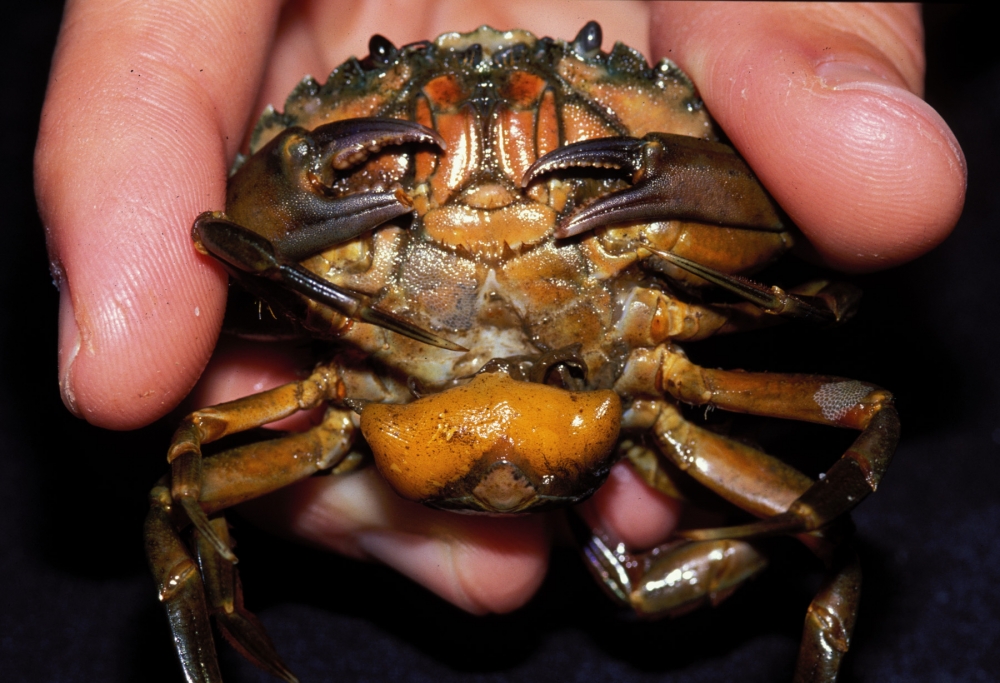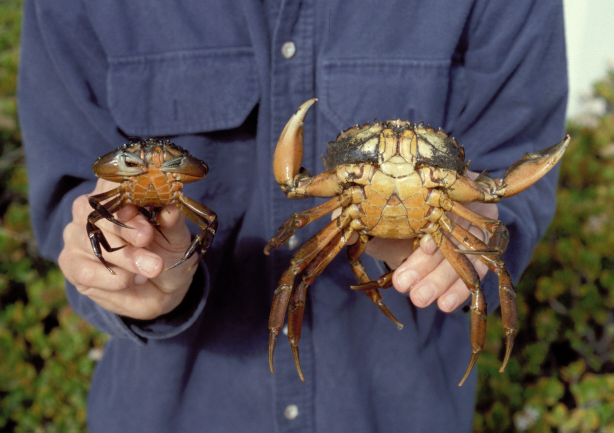
RESEARCHERS FIND INVASIVE SPECIES ARE HEALTHY SPECIES -- THEY LEAVE THEIR PARASITES BEHIND


Globalization of commerce, especially by ships and air traffic, transports hitchhiking plants and animals around the world and in many cases they become pests in the new location -- according to an article in the February 6 issue of the journal Nature. One advantage that could explain their success is that the invaders often arrive without the parasites that hold them in check at home.
First author Mark E. Torchin, assistant research biologist at the University of California, Santa Barbara, said that the team of authors analyzed 26 invading animal species -- mollusks, crustaceans, fishes, birds, mammals, amphibians and reptiles -- chosen randomly, and found that, in general, the introduced populations had only half as many parasites as native populations.
"On average, an animal has 16 parasites at home, but brings less than three of these to new areas that it invades," said Torchin. "In the new region, parasites are not well matched to novel hosts, and only about four parasites will successfully attack an invading species."
On this research Torchin teamed up with co-authors Kevin Lafferty, an assistant adjunct professor of biology at UCSB and a marine ecologist with U.S. Geological Survey; Armand Kuris, professor of biology at UCSB; his graduate student, Valerie McKenzie; and Andrew Dobson, professor in the department of ecology and evolutionary biology at Princeton University.
Kuris explained that parasites are so pervasive that parasitism is the most common lifestyle on Earth. Many parasites don't just make animals sick -- they may castrate them, change their behavior, or even kill them. By leaving parasites behind, introduced species have a strong advantage over less fit native competitors which remain fettered by their own full complement of parasites.
Borrowing from popular culture, Lafferty said, "Parasites are to invasive species what kryptonite is to Superman. On his home planet Krypton, kryptonite was a regulator, keeping Superman ordinary. Freed from kryptonite on Earth he gained super powers. But unlike Superman who used his power for good deeds, invasive species can be devastating."
The European green crab (Carcinus maenas) is one voracious predator that has been studied extensively by the authors Torchin, Lafferty and Kuris. It has had a devastating effect on East Coast fisheries and is now threatening fisheries in the Northwest as it moves from California toward Puget Sound in Washington. The green crab eats Dungeness crabs, rock crabs, mussels, oysters and clams. In northern New England, the advent of the green crabs has been associated with the demise of the softshell clam fishery. On the West Coast, the oyster, mussel and clam mariculture industries are threatened, as are Dungeness and rock crab fisheries, and bait fisheries. The green crab has also invaded Australia, Japan, Tasmania and South Africa.
Torchin, Lafferty and Kuris found that in Europe, the green crab's native home, parasitic barnacles castrated the crabs. Where the barnacles were common, the crabs were small and rare. Conversely, the scientists found that crabs were big and abundant in areas where barnacles were uncommon.
In a separate, but parallel, study also published in Nature, Charles Mitchell and Alison Power of Cornell University found that introduced plants most likely to become weeds are those that have left behind the most pathogens. The
plant and animal groups worked side by side on the research at UCSB's National Center for Ecological Analysis and Synthesis.
According to both groups of authors, bringing in parasites from a pest's native range can hinder superpests. The benefits to this organic form of pest control are sustainability, low cost and reduced dependence on pesticides. But the researchers cautioned that biological control of pests is risky if the parasites are not specific to the target pest.
"Suitable biocontrol agents should be harmless to native species, just as kryptonite is harmless to Earthlings," said Lafferty.
Note to editors:
First two photos show European green crab with parasitic barnacle. Last photo compares the European green crab with parasites and a larger crab without parasites. First two photos by Todd Huspeni of UCSB, third photo by Jeff Goddard, (also of UCSB). Mark Torchin is available at (torchin@lifesci.ucsb.edu). Kevin Lafferty is available at 805-893-8778 or lafferty@lifesci.ucsb.edu. Armand Kuris is available at (805) 893-3998 or (805) 965-0931 or kuris@lifesci.ucsb.edu.



